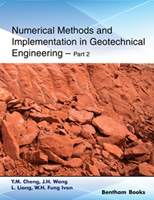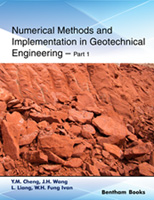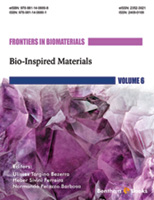Water savings in buildings has been a matter of concern all over the world. Alternative water sources as well as water saving appliances have been studied by many researchers in order to try to promote water savings in buildings. Rainwater tank sizing and modelling, wastewater treatment and reuse, relationship between user behaviour and water savings, health issues related to water savings and environmental analysis of rainwater and grey water use in buildings are subjects related to water savings in buildings. Thus, the objective of the eBook is to put together some of these aspects by means of seven chapters written by renowned researchers.
Chapter 1, written by Andrea Teston, Barbara Müller Colasio and Enedir Ghisi, of the Federal University of Santa Catarina, Brazil, presents the state of the art on water savings in buildings in Brazil. The authors conclude that there is a high potential for potable water savings in buildings by using rainwater for non-potable purposes in Brazil.
Chapter 2, written by M. Ashiqur Rahman, Md Mahmudul Haque, Amir Ahmed and Ataur Rahman, of the Western Sydney University, Australia, focus on rainwater harvesting to reduce potable water demand in buildings in Australia.
Ilaria Gnecco and Anna Palla (of the University of Genova), and Alberto Campisano and Carlo Modica (of the University of Catania), Italy, wrote Chapter 3. It assesses methodologies for designing rainwater harvesting systems. The impact of European precipitation regimes on the management of rainwater tanks as well as on the influence of water demands on the performance of the system was also analysed.
Chapter 4 was written by Ghazaleh Vaseghi, Ilke Celik and Defne Apul (of the University of Toledo) and Steven Burian (of University of Utah), USA. It contains an approach for using multi-criteria decision analysis to study the tradeoffs of rainwater harvesting system designs.
Chapter 5, written by Asher Kiperstok and Alice Costa Kiperstok, of the Federal University of Bahia, Brazil, discusses the implementation of water saving programmes in institutional and university buildings over seventeen years in Bahia.
Chapter 6 was written by Cristina Matos Silva and Vitor Sousa, of the University of Lisbon, and Inês Meireles, of the University of Aveiro, Portugal. The performance of rainwater harvesting systems in residential buildings, a shopping centre and a university building in Portugal, covering different water use patterns and geographical locations, is shown in this chapter.
And last but not least, Cristina Santos (of the University of Porto), Cristina Matos (of the University of Beira Interior and University of Trás-os-Montes and Alto Douro) and Armando Silva-Afonso (of the University of Aveiro), Portugal, are the authors of Chapter 7. This chapter assesses health issues related to the application of water saving systems in buildings.
It is possible to observe that most of the locations presented in this eBook demonstrate that there is a great potential for potable water saving through the use of rainwater in buildings. Rainwater harvesting can increase water availability and, as a consequence, improve the population's life quality even in semi-arid regions, such as the Brazilian Northeast. However, the rainwater harvesting systems should be used in combination with other forms of water conservation for efficient water management in cities, such as water saving appliances and greywater reuse.
The more developed the country, the greater the water consumption in the buildings. For this reason, European standards recommend the conservation of water. Potable water savings is an ally for rainwater harvesting systems due to the retention time which is inversely proportional to the water quality in the reservoir. Asher Kiperstok and Alice Costa Kiperstok pointed out that waste of water is constantly driven by weak maintenance schemes and due to the fact that water is free to users of public facilities.
In Australia, according to M. Ashiqur Rahman, Md Mahmudul Haque, Amir Ahmed and Ataur Rahman, favourable regulations and public awareness have made use of rainwater as a significant alternative source of water in buildings. However, there is still room for improvement in systems by designing the project for greater efficiency. In Brazil, for example, there is still the need for more investments in national support programmes for water savings in buildings. But one of the most important programmes in the country is the programme called one million cisterns. This programme aims to provide a rainwater harvesting system for families living in areas where water is scarce or where the water utilities do not supply water.
As for methodologies for designing rainwater harvesting systems, Ilaria Gnecco, Anna Palla, Alberto Campisano and Carlo Modica explain the critical correlation between the rainfall event characteristic, antecedent dry weather period, and the system performance: the water saving efficiency is in inverse proportion while the water quality degradation (expressed as detention time) is directly proportional to the antecedent dry weather period.
The Utah case study presented by Ghazaleh Vaseghi, Ilke Celik, Defne Apul and Steven Burian in Chapter 4 shows three scenarios of reservoir positioning: (1) two reservoirs, one on the ground floor and one on the roof; (2) a reservoir on the ground floor; and (3) a reservoir on the roof. The conclusion suggests that using only one reservoir for rainwater collection and distribution is the most viable option, although they have not evaluated the impact of the need for greater structural support to withstand reservoir weight.
One of the problems that is still considered as an obstacle to the efficient use of water is health issues. That is why it is important to clearly state how to install a system and keep it safe and feasible, explaining what treatments are needed for rainwater and greywater to prevent human contamination.
Although the obstacles still met for the use of rainwater harvesting systems, such as population awareness, water waste and issues related to water quality, Cristina Matos Silva, Vitor Sousa and Inês Meireles have shown that rainwater is a relevant alternative for water conservation in Mediterranean countries, where water savings can reach up to 60% in most of the buildings studied.
I think this eBook will be a valuable resource to researchers, post-graduate students, undergraduate students, engineers, water utilities, environment agencies, industries, and many others interested in water savings in buildings.
I would like to thank all the authors who have contributed to this ebook, and the editorial team for their valuable work and completion of this eBook.
The views and opinions expressed in each chapter of this eBook are those of the authors.
Prof. Enedir Ghisi
Department of Civil Engineering,
Federal University of Santa Catarina,
Florianópolis,
Brazil.





